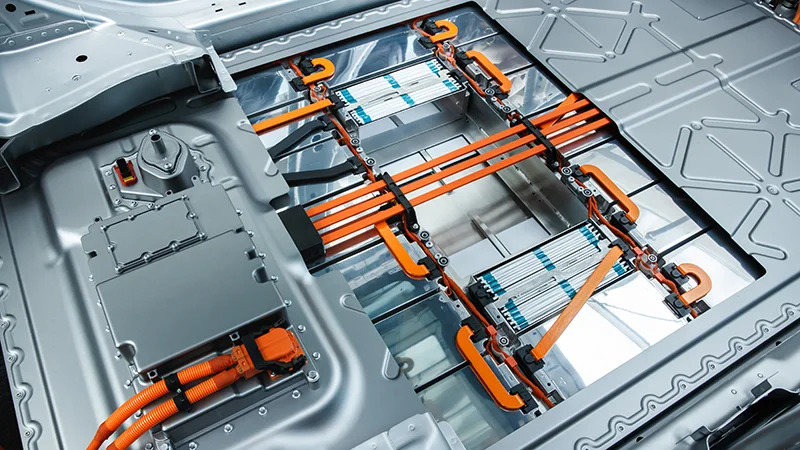Growth in batteries outpaced nearly all other clean energy technologies in 2023, buoyed by declining costs, advancements in technology, and favorable industrial policies (including subsidies), the International Energy Agency (IEA) said in a new report.
>>>READ: The World’s First Solar-Powered Truck is Being Tested in Sweden
Driven by generous carrots and sticks, which have spurred private investment, The IEA’s Special Report on Batteries and Secure Energy Transitions found that lithium-ion (Li-ion) battery prices have fallen by more than 90% in less than 15 years. Since 2010, Li-ion prices have dropped from $1,200 per kilowatt-hour to less than $140 per kilowatt-hour. This marks one of the fastest declines ever seen in clean energy technologies.
The findings are significant given Li-ion batteries’ relevance to the global energy ecosystem. Despite the technology being traditionally associated with consumer electronics like computers and phones, Li-ion batteries are playing an increasingly significant role in the energy sector, which now accounts for more than 90% of overall battery demand.
So what makes Li-ion batteries so integral to hitting our energy goals?
According to the Special Report, batteries are a key component in a clean energy expansion. To triple global renewable energy capacity by 2030, a goal agreed to at COP28 in Dubai, energy storage must increase sixfold, with batteries playing a crucial role in this expansion.
Fortunately, the rapid decline in Li-ion battery prices since 2010 has spurred investment in the renewable energy market by making green energy sources more economically viable and accessible. This cost reduction has helped to mitigate the intermittency of solar and wind power and enabled the broader adoption of these technologies..
The effects of falling battery prices will be most pronounced in the electricity and transport sectors, ‘two key pillars’ for slashing emissions quickly enough “to meet the targets agreed at COP28 and keep open the possibility of limiting global warming to 1.5°C,” says IEA Executive Director Fatih Birol.
“Batteries will provide the foundations in both areas, playing an invaluable role in scaling up renewables and electrifying transport while delivering secure and sustainable energy for businesses and households.”
Although they are the most common, Li-ion is not the only battery-powered energy storage solution on the market. Other alternatives to traditional Li-ion batteries include solid-state batteries, which replace the liquid electrolyte found in standard lithium-ion batteries with a solid electrolyte. Compared to Li-ion batteries, they offer higher energy density and a longer cycle life, with high-density solid-state batteries approximating 10,000 charging cycles (modern Li-ion batteries, on the other hand, cap at around 2,000-3,000 cycles before exhibiting noticeable degradation).
>>>READ: Could Solid-State Batteries Accelerate Electric Vehicle Adoption?
Solid-state batteries also offer improved safety features relative to their conventional counterparts, mitigating the risk of thermal runaway and fire hazards associated with liquid electrolytes. Additionally, the next-generation technology is less prone to dendrite formation, a common issue in Li-ion batteries that can lead to short circuits and decreased performance. These safety enhancements make solid-state batteries particularly attractive for applications where reliability and safety are paramount, such as electric vehicles and grid-scale energy storage systems
However, solid-state batteries are still in their initial stages of development and face challenges to full-scale commercialization, although the IEA predicts massive performance gains beyond 2030.
Other up-and-coming battery technologies include zinc-air batteries, which offer even longer energy storage capacity ranging from several hours to multiple days (the storage capacity of lithium-ion batteries peaks at about four hours). Moreover, zinc-air batteries excel in terms of sustainability. As the primary component of zinc-air batteries, zinc is non-toxic, widely available, and an abundant natural element. Given its plentiful supply, zinc-air batteries hold promise for being more cost-effective in large-scale energy storage applications.
While these upcoming technologies are making significant headways and are poised to play a role in advancing renewable energy technologies, Li-ion batteries remain the dominant rechargeable battery technology.
As battery prices continue to fall, further innovation in battery chemistries will continue to improve their performance and bring about advancements in energy storage efficiency, safety, sustainability, and cycle life. Looking to 2030, the IEA projects Li-ion battery costs to fall an additional 40%. Additionally, continuous innovation in the battery manufacturing industry is expected to push sodium-ion batteries to the market, with the technology expected to account for less than 10% of EV batteries by 2030.
Nathalie Voit is a freelance content creator and a graduate of the University of Florida. She is an alumni of The Heritage Foundation’s Young Leaders Program.
The views and opinions expressed are those of the author’s and do not necessarily reflect the official policy or position of C3.
